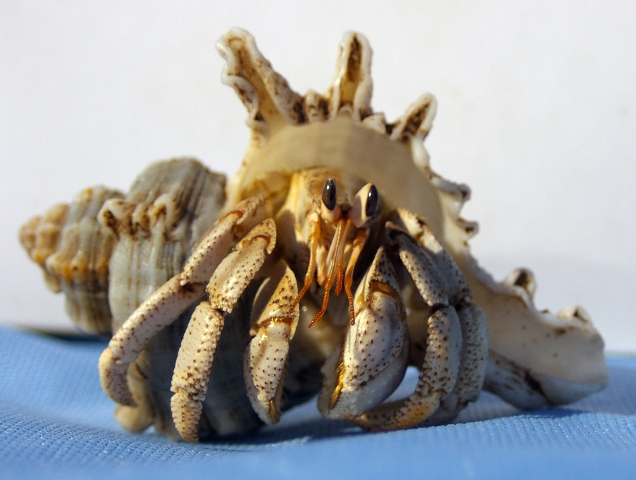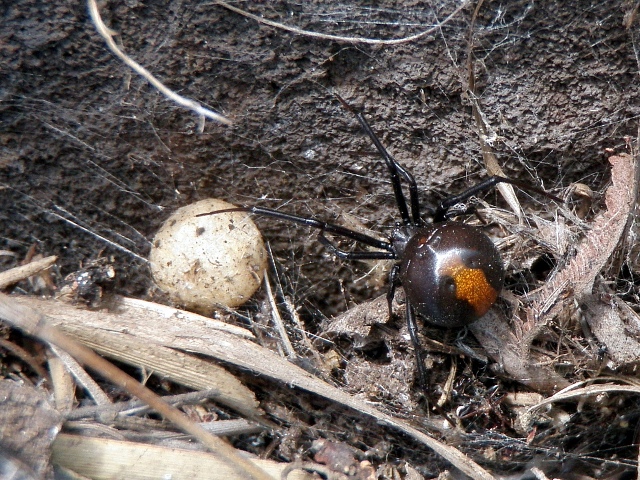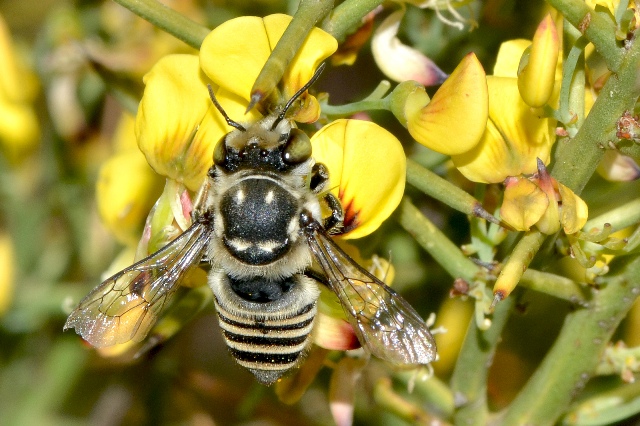Key to Australian Freshwater and Terrestrial Invertebrates
Invertebrates are incredibly diverse and can be found in every environment imaginable. From the freezing ice of Antarctica to humid rainforests, from high up in the atmosphere to deep beneath the ground, a species of invertebrate lives just about everywhere. Including animals such as crabs, jellyfish, sponges, millipedes, spiders, ants, snails, and worms, invertebrates are all around us � you�ve almost certainly seen one today!

Arthropoda - Crustacea -
Malacostraca - Decapoda... a hermit crab!
Image credit: Vanessa Pike-Russell
used under a
Creative Commons Attribution-NonCommercial-NoDerivs license
Malacostraca - Decapoda... a hermit crab!
Image credit: Vanessa Pike-Russell
used under a
Creative Commons Attribution-NonCommercial-NoDerivs license
Biodiversity of Australian Invertebrates

Latrodectus hasselti
Redback spider guarding her eggsac
Image credit: Natalie Tapson
used under a
Creative Commons Attribution-NonCommercial-ShareAlike license
Redback spider guarding her eggsac
Image credit: Natalie Tapson
used under a
Creative Commons Attribution-NonCommercial-ShareAlike license
Many vertebrates depend on invertebrates as a primary food source. Species of bird, fish, reptiles and mammals all consume invertebrates, and if you�ve eaten lobster, shellfish or squid before, you�ve eaten invertebrates too! Food webs are always a delicate balance, and a decline in an invertebrate prey species can have disastrous effects on the vertebrate population relying on that species for survival.
Invertebrates are extremely important for maintaining the health of soils. Termites, ants and earthworms are among the invertebrates that recycle nutrients by decomposing organic matter in the soil, allowing the nutrients to become available to plants again.

Insecta - Hymenoptera - native bee, Western Australia
Image credit: Wi Bing Tan
used under a Creative Commons Attribution-NonCommercial-NoDerivs license
Image credit: Wi Bing Tan
used under a Creative Commons Attribution-NonCommercial-NoDerivs license
Many plant species are pollinated by invertebrates, most often by insect species such as bees, butterflies and beetles. These insects are necessary for the reproduction of their associated plant species, and the decline in some endangered plants has been linked with the decline of their insect pollinator.
Some freshwater invertebrate species are used as environmental indicator species. This means that the population of the invertebrate species can be correlated with the overall health of the water system because of the sensitivity of the species to pollution or disturbance.
Invertebrates can be herbivores (plant eaters), detritivores (feeding off of decaying organic matter) or predatory (they eat other invertebrates). Only rarely will an invertebrate prey on a vertebrate. There are also several groups of invertebrates which are parasitic. This means they depend on another organism for survival and may live attached to the outside or the inside of their host.






